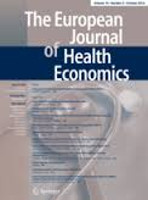Posted by Michael Wonder on 20 Feb 2018
Beyond QALYs: multi-criteria based estimation of maximum willingness to pay for health technologies

20 February 2018 - The QALY is a useful outcome measure in cost-effectiveness analysis. But in determining the overall value of and societal willingness to pay for health technologies, gains in quality of life and length of life are prima facie separate criteria that need not be put together in a single concept.
A focus on costs per QALY can also be counterproductive. One reason is that the QALY does not capture well the value of interventions in patients with reduced potentials for health and thus different reference points. Another reason is a need to separate losses of length of life and losses of quality of life when it comes to judging the strength of moral claims on resources in patients of different ages.
An alternative to the cost-per-QALY approach is outlined, consisting in the development of two bivariate value tables that may be used in combination to estimate maximum cost acceptance for given units of treatment—for instance a surgical procedure, or 1 year of medication—rather than for ‘obtaining one QALY.

